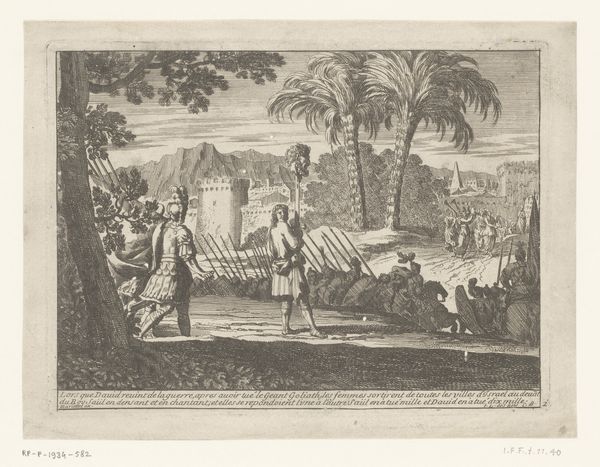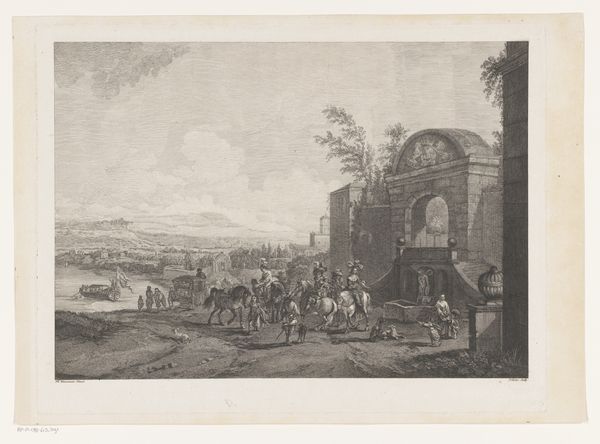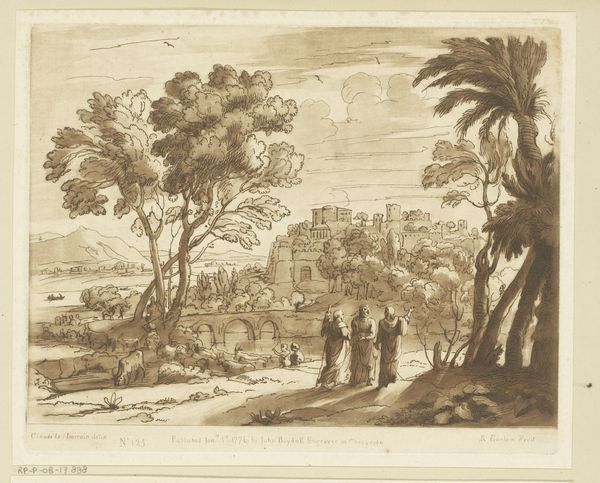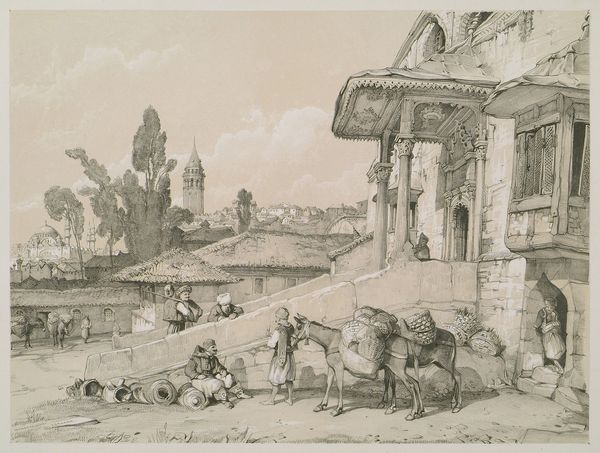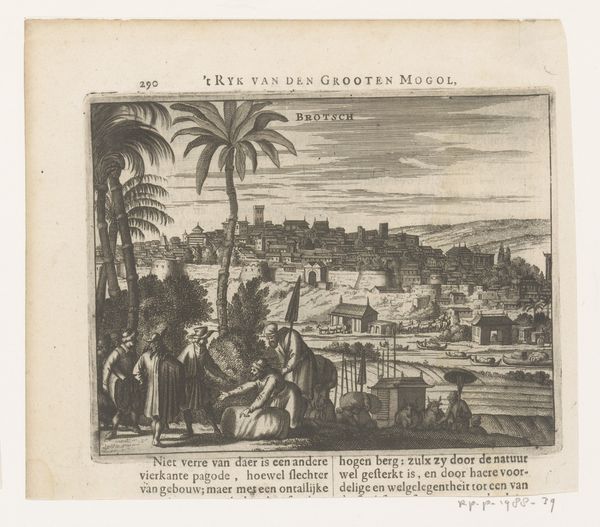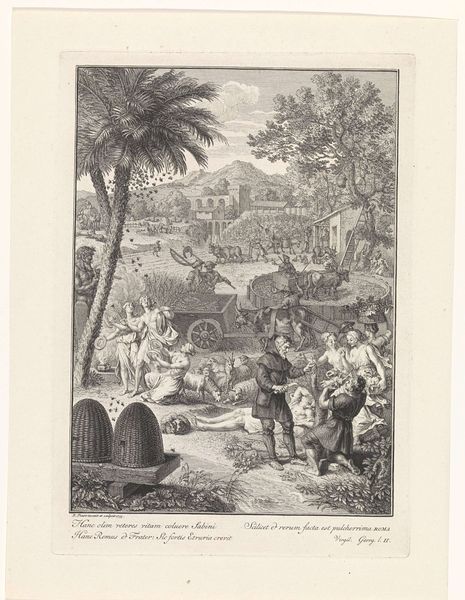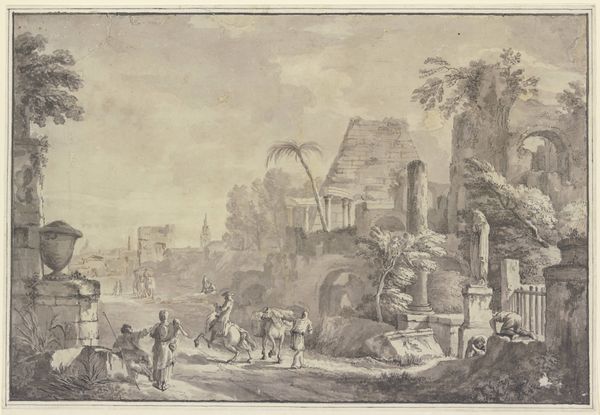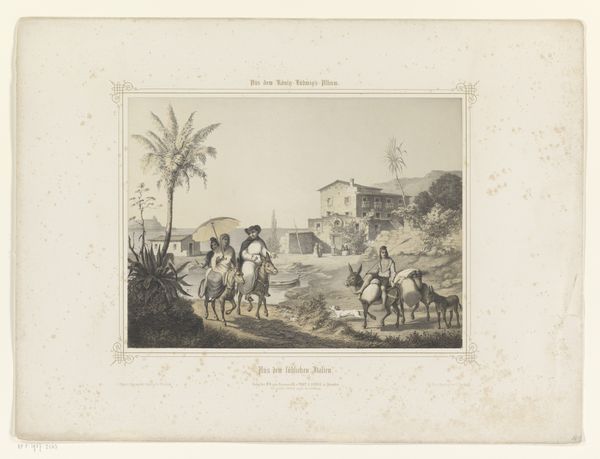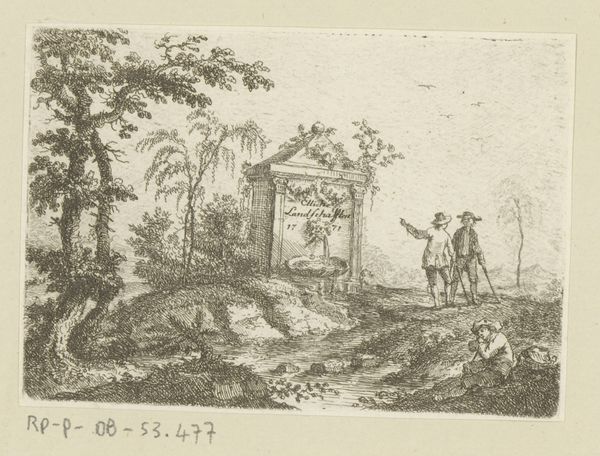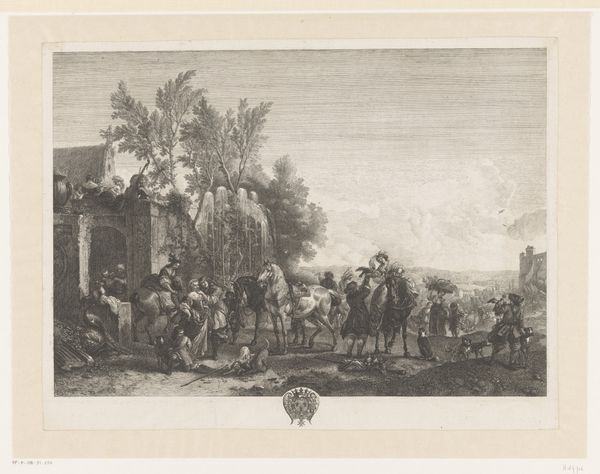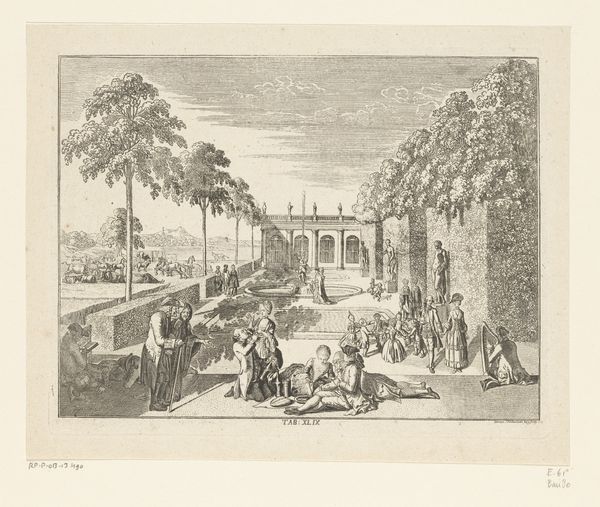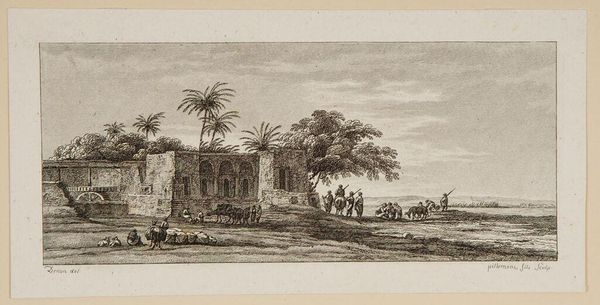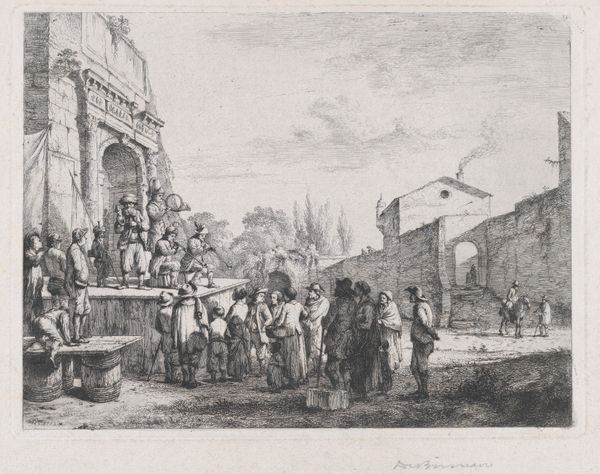
print, engraving
#
neoclacissism
# print
#
landscape
#
figuration
#
history-painting
#
engraving
Dimensions: height 240 mm, width 374 mm
Copyright: Rijks Museum: Open Domain
Curator: This delicate engraving, created around 1793 by Jean Louis Charles Pauquet, is titled "Waarzegsters voorspellen de toekomst van soldaten" which translates to "Fortune tellers predict the future of soldiers." Editor: My immediate reaction is how placid it feels despite the implied subject matter. It's so meticulously rendered, like a stage set, but everything seems at peace. The only activity we have are with the subjects depicted within. Curator: It’s a curious combination, isn’t it? It adheres to the conventions of neoclassicism in its staged landscape and figures borrowed from the Orient, but the subject hints at deeper unrest brewing within. This was a turbulent period, with revolutionary ideas permeating society. An army preparing for potential conflict is more than likely preparing for bloodshed, perhaps at its own home, perhaps afar. Editor: The choice to depict fortune tellers, though – that speaks volumes. They act as vehicles to express a culture’s anxieties and uncertainties in the face of the unknown. The drawing presents a tapestry of conventional symbolism such as palm trees suggesting distant lands to add weight. Even the body language suggests different emotional responses, which further alludes to the soldiers awaiting their fates. Curator: It is worth reflecting that Pauquet, working during a period of intense upheaval, probably felt a pressure to produce such imagery due to the need of distracting public concern over these pressing socio-political climates, in effect, this could be propaganda to encourage solidarity or allay public unrest. Editor: Yes, exactly! And look at the soldier with a lowered head: Perhaps his pose signals apprehension or worry. Ultimately, the piece captures a society on the precipice. Curator: Agreed. Considering the role of institutions in the proliferation of the arts at the time, works like this highlight just how deeply integrated art became into public and private life. Editor: Precisely, so by unraveling those layers of intended symbolic weight, we gain an appreciation of the human dimension of anxiety as nations transition into this complex and fast changing political environment.
Comments
No comments
Be the first to comment and join the conversation on the ultimate creative platform.
